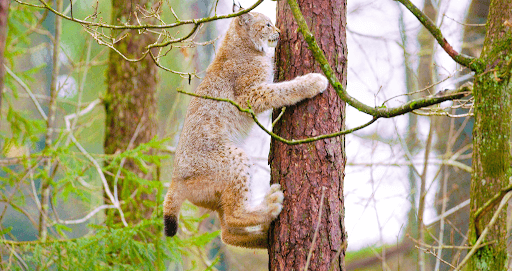How Do Genetics Influence Cat Fur Colors

Cats come in many different colors and coat types. From ginger to tabby to black, it seems there’s no shortage of color combinations for these beloved animals. Some felines sport short coats while others have long fur. The pattern, length, texture, and color of each cat seems as unique and different as the next.
Color can be understood through genetics as it’s the DNA that determines the fur. However, things can get complicated since there are many genes at play. In fact, a feline can have an extremely similar coat of a specific breed, without actually descending from that breed.
With the rise of cat DNA tests, many pet owners are enjoying learning more about their beloved pets. Through studying its genetics, owners can gain important insights into their feline’s health, genetic makeup, and breed.
Dominant Cat Coat Colors
It might surprise you to learn that there are only two basic types of coat colors in cats: black and red. These two colors are known as dominant coat colors. Therefore, each individual feline’s looks are based on these two main colors. Either the dominant colors are diluted or they’re being changed in some manner.
When the dominant color of black is diluted, the color is blue, and when the dominant color of red is diluted, the color is cream. Black or red colors are able to produce both dominant and diluted kittens. When two felines mate with diluted coat colors, they’ll produce diluted colored kittens.
Tortoiseshell and Tabby Cats
What’s going on when a feline has multiple colors like a tortoiseshell or tabby coat color? Each of the four solid colors (black, red, blue, and cream) can be combined into a tabby pattern. Sometimes a tabby pattern will also include white, but not always. These colors are then merged into tabby patterns, which include:
- Classic
- Ticked
- Mackerel
- Spotted
Tabby felines get their stripes from a gene called the agouti gene. Their stripes will reflect an even distribution of color, and the background of their fur is composed of banded hairs. These felines will likely also show a black line around the eyes, a pink nose, and an M shape on their forehead.
The Genes Behind White Cats
Purely white felines are perhaps less common to see, but they certainly exist. You'll be surprised to learn that white is actually not a color. The white color you see expressed is a cover from a gene that’s hiding the true color of the feline.
Sometimes it’s possible to discern the true underlying color of a white feline. Usually, they’re born with a spot somewhere on their fur, like a black one, which reveals their true coat color. Next time you spot an all-white feline, you’ll know that it’s actually sporting a colorful coat somewhere in its genes.
Color of Special Cat Breeds
Special breeds are often recognizable by their coloring. For example, the Siamese breed has a very distinctive look that’s hard to interpret as anything else. This is because the breed has a special gene that works to limit the color to certain areas of the fur. Interestingly enough, this distribution is based on heat. The color is stronger on the cooler areas such as the head, paws, and tail. On the warmer part, like the body, the color is lighter.
What Affects the Coat Color Of Cats?
Ultimately, a feline’s fur color will be a matter of genetics. Its coat color is based on the dominant colors and pairings of its parents. The color of stray cats may be much more difficult to predict than purebred breeds. This is because the purebred lineage is well known, tracked, and followed closely.
Let’s not forget that some feline friends don’t have hair. This is also caused by genetics. The type of hairlessness may be specific to that breed.
Bottom Line
Understanding your cat’s coat color allows you to get to know your furry family member on a deeper level. Since coat color reveals insights into your pet’s genetic information, it can be a fun way to explore more about their breed, characteristics, and even their ancestry.



